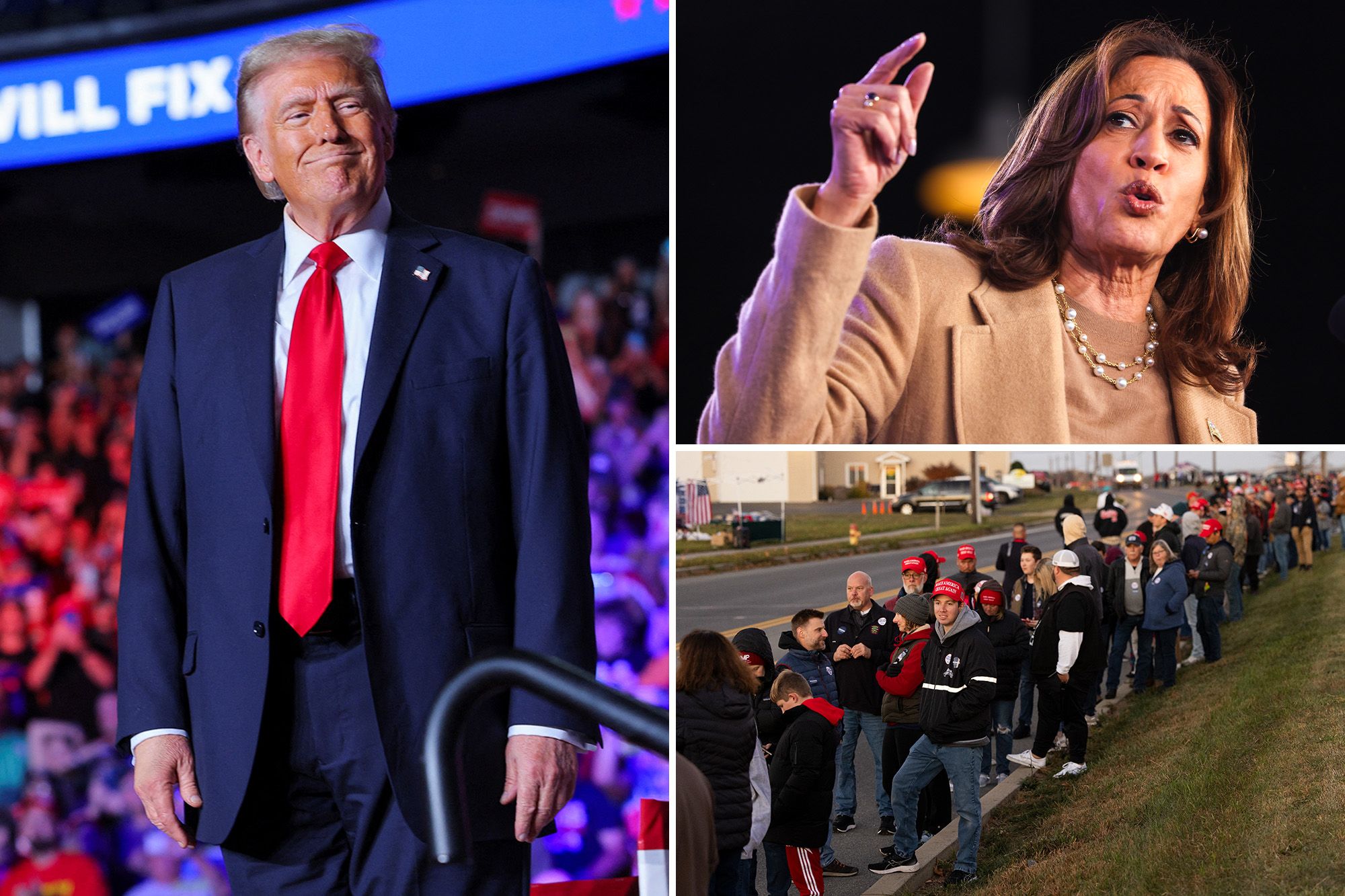
The New York Times’ top political analyst warned Sunday that pollsters may not have solved the fundamental problems they faced in 2016 and 2020 and may again be underestimating Donald Trump.
Times writer Nate Cohn warned in X that he “has no idea whether our polls (or any polls) [are] Right explained that the poll’s inevitable bias could skew the results because Democrats dramatically outnumber white Republicans, a Trump voting stronghold, when it comes to responding to pollsters.
“Four years ago, polls were thought to be underestimating Mr. Trump because of nonresponse bias — in which his supporters were less likely to take polls than demographically similar Biden supporters,” Cohn wrote in an analysis for the Times.
Cohn, 36, one of the leading election data gurus, stressed that it is difficult to track “nonresponse bias,” but noted that he likes to review the rate at which Democrats and Republicans respond to pollsters in an effort to gain knowledge.
“In these final polls, white Democrats were 16 percent more likely to respond than white Republicans,” he said. “This raises the possibility that the polls could again underestimate Mr. Trump. We do a lot to account for that, but ultimately there are no guarantees.”
Cohn also warned that Democrats appear to be suffering from a typical “shrinking” early voting advantage, which could help Republicans on Election Day.
He thought that given the recent dichotomy between the two parties when it comes to early voting, it’s possible that Trump could get a boost on Election Day, when GOP voters flock to the polls.
“The pattern is pretty similar across the battlegrounds: Democrats lead in early voting; Republicans lead with what remains, and in either case it’s not by the margins of four years ago, when the pandemic upended the usual patterns of early voting,” he wrote.
“There’s a little confidence here for the Democrats: They’re counting on a lot of people to vote on Election Day who didn’t vote in 2020 or 2022. Their voting record gives plenty of reason to think they will do that, but if not, the result will soon look very different.”
Trump, 78, has historically opposed early voting, but this election cycle, his campaign has pushed Republicans to cast their ballots early in an effort to maximize grassroots turnout.
The New York Times and Siena College released a new set of battleground-state polls Sunday that determined six of the seven close primary races as within the margin of error, or too close to call. Arizona, which went hard for Trump, was the only exception.
“Typically, the final polls show a relatively clear favorite, even if that candidate doesn’t go on to win.” This is not going to be one of those elections,” Cohn said of those results.
One finding in the New York Times/Siena College poll that piqued the interest of many pollsters was evidence that late decision makers may be favoring Vice President Kamala Harris.
Given the ball-dancing nature of the competition, this could be decisive in the outcome of the competition. About 8% of voters claimed to have made their decision recently. Of that group, 55% went for Harris compared to 44% for Trump.
Overall, Cohn emphasized that he simply does not know how the election will play out and that “nobody does.”
Some poll enthusiasts have worried that pollsters have “rigged” poll results to make sure their polls aren’t outlandish.
Experts such as Nate Silver have claimed that there was far less diversity within the 2024 presidential race vote than there should be.
Cohn has similarly raised concerns about the “herd” of polls and described ways in which polls can also overestimate Republicans.
“Many pollsters (not us) have adopted heavy-handed practices that give more Republican-leaning samples, out of a potentially but not necessarily justified fear of systematic failure to re-reach Trump voters,” Cohn wrote in X. “The decisions are very more susceptible to participating in this cycle.”
Trump campaign pollster Tony Fabrizio wrote a memo in response to the latest poll, arguing that its samples are historically skewed to the left.
“The New York Times is picking an electorate that looks far to the left in 2020, despite the hard facts of voter registration and early voting showing an actual electorate that has shifted just to the right in every state,” Fabrizio wrote in a memo shared by. the campaign.
“The New York Times even helpfully admitted in their story that they had a harder time reaching Republican voters than they did in their 2020 polls, which were wildly inaccurate,” he added, referring to Cohn’s analysis.
Right now, Trump and Harris are tied in the latest RealClearPolitics aggregate of national multi-candidate polls.
Trump is favored in most RCP state poll averages.
#NYTs #chief #political #analyst #explains #polls #underestimating #Trump
Image Source : nypost.com
